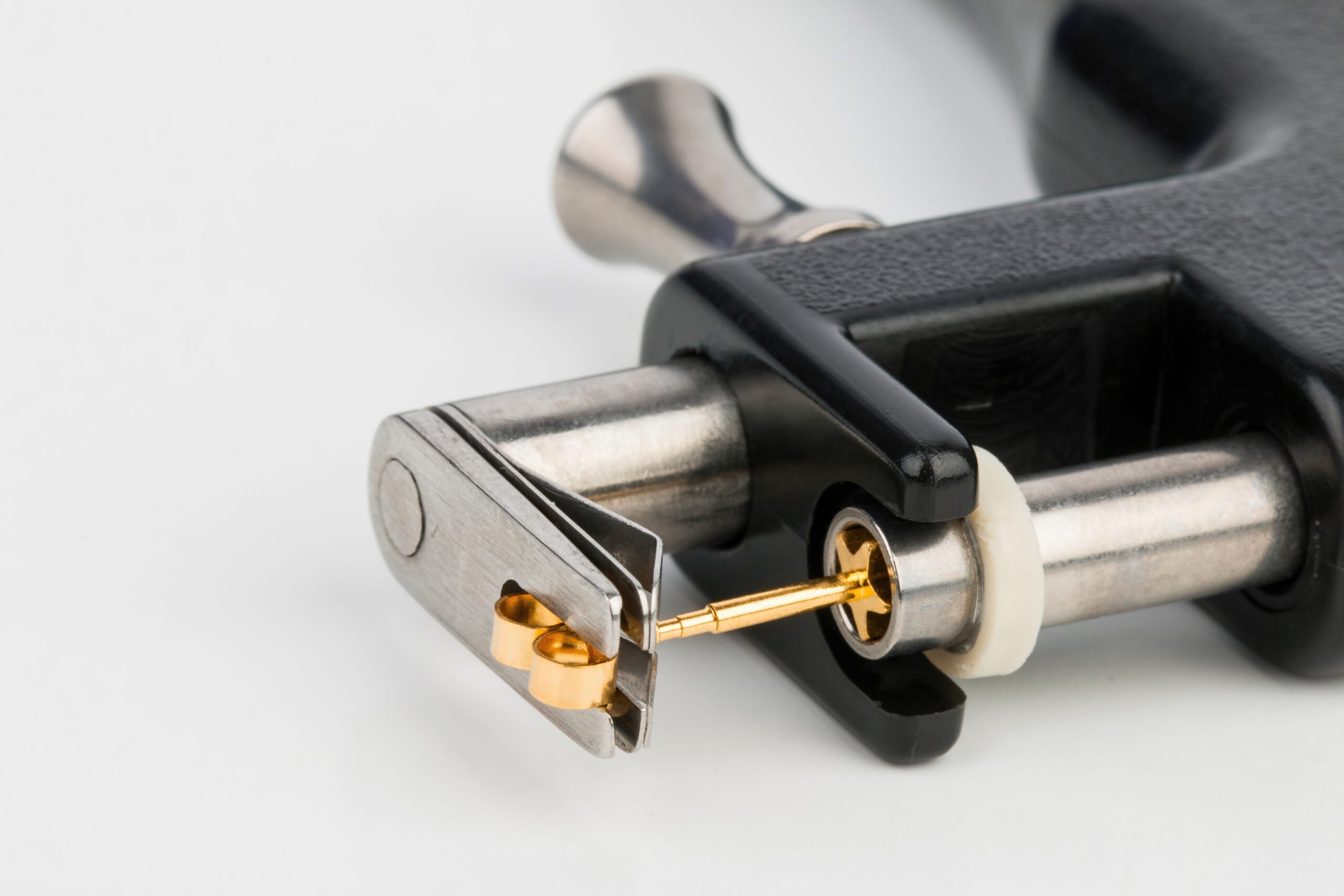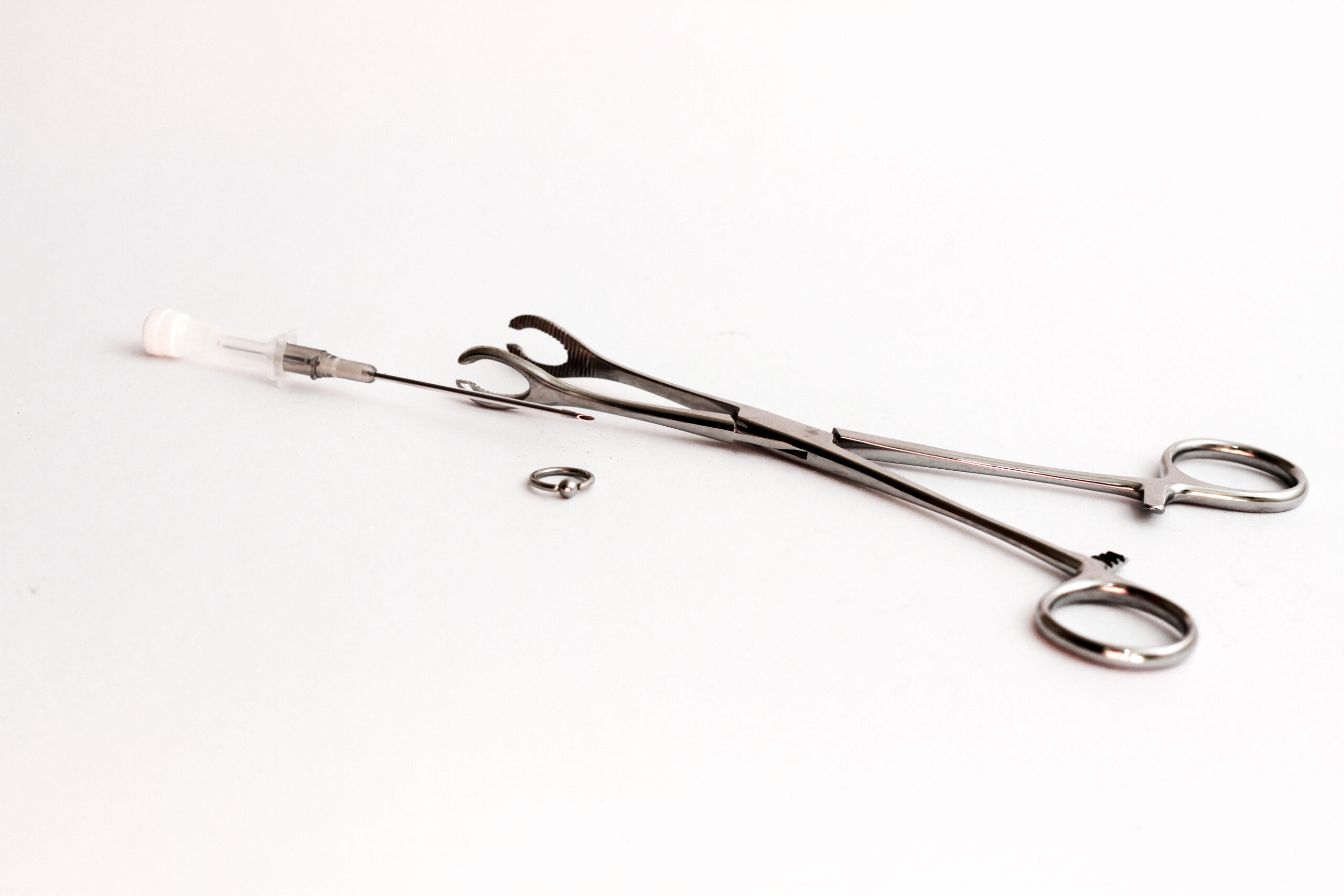If you’re considering getting a septum piercing, you may be wondering about the best method to use – piercing guns or needles. While both options are available, it’s important to understand the differences between them to make an informed decision.
Table of Contents
Professional piercers overwhelmingly agree that needles are the safer and more hygienic choice for septum piercings. Piercing guns can cause tissue damage, scarring, and infection due to their forceful nature.
On the other hand, needles are more precise and can be adapted to fit any desired gauge size. Additionally, professional piercers are trained to use needles, ensuring a level of expertise and accuracy that piercing guns cannot provide.
This article will explore the various factors to consider when choosing between piercing guns and needles for your septum piercing, including safety and hygiene, precision and accuracy, pain and trauma, jewelry quality, professional expertise, risk of complications, and aftercare and healing.
Key Takeaways
- Professional piercers agree that needles are the safer and more precise option for piercing, including septum piercings.
- Piercing guns cannot be sterilized and can cause tissue damage and scarring, while needles come pre-sterilized and offer a quicker healing process with a lower risk of complications.
- Piercing needles are incredibly versatile and can be used on any piercing location on the body, including the septum.
- FYT Supplies, for example, offers pre-sterilized piercing needles and tapers for a safer and more hygienic piercing experience, making them a reliable source for septum piercing supplies.
Safety and Hygiene
When it comes to septum piercing, it’s important to prioritize safety and hygiene. Opt for the more precise and hygienic needle method over the risky and unsanitary piercing gun method. Piercing guns cannot be sterilized and often use low-quality jewelry, leading to unsanitary piercings.
In contrast, piercing needles are single-use and come pre-sterilized, ensuring a safer and more hygienic piercing experience. Professional piercers agree that needles are the safer option for all types of piercings, including septum piercings.
Piercing guns can cause tissue damage and scarring, while needles are more precise and cause less blunt-force trauma. Needles also do not cause any damage to the tissue, making them a safer and more hygienic option. Therefore, when it comes to septum piercing, it’s crucial to prioritize safety and hygiene by choosing the piercing needle method.
Precision and Accuracy
You can easily visualize the precision and accuracy of a needle piercing compared to a gun piercing by imagining a pencil drawing with a sharp point versus a dull crayon. Professional piercers prefer needle piercing because it offers a more accurate and hygienic option for piercing.
Here are a few reasons why needle piercing is the better option:
- Needle piercing is more precise and accurate than gun piercing.
- Professional piercers are trained to use needles, ensuring that piercings are placed correctly.
- Needle piercing is more hygienic than gun piercing since needles are sterilized and single-use.
- Needle piercing is safer for the client since it causes less tissue damage and trauma than gun piercing.
- Needle piercing allows for customization, as piercers can choose the correct gauge size for each individual client.
Overall, needle piercing is the safer and more precise option for septum piercings. While piercing guns may seem easier and quicker, professional piercers always choose the needle method for a reason. Trusting your septum piercing to a professional piercer who uses needles ensures that you’ll receive a safe and accurate piercing.

Pain and Trauma
Getting pierced can be a bit painful, but it’s important to consider the amount of trauma your body will experience during the process. When it comes to septum piercings, using a piercing needle is the safer and less traumatic option compared to piercing guns.
Piercing guns use a spring-loaded mechanism to force a stud through the skin, which can cause blunt force trauma, leading to more pain and longer healing times. In contrast, needle piercing causes less blunt force trauma, resulting in less pain and a quicker healing process.
Aftercare is crucial for any type of piercing, and using a needle for your septum piercing can make the aftercare process easier. Piercing needles are single-use and more sanitary than piercing guns, reducing the risk of infection. Moreover, piercers who use needles are more precise and can mark the piercing location beforehand, making the piercing process more accurate.
While getting a septum piercing may be a bit uncomfortable, using a needle can make the experience less painful and cause less trauma to your body, resulting in a quicker and safer healing process.
Jewelry Quality
The quality of your jewelry can make or break your septum piercing experience. It’s important to invest in high-quality pieces that are safe and stylish.
Piercing guns are often associated with low-quality jewelry that can trap bacteria and cause irritation. On the other hand, needles are typically used by professional piercers who prioritize hygiene and precision.
When it comes to septum piercings, the type of jewelry used is especially important due to the sensitive location of the piercing. Piercing guns may use low-quality jewelry that can cause inflammation and discomfort. Needles, on the other hand, allow for a wider range of high-quality jewelry options that can reduce the risk of complications.
Investing in quality pieces not only ensures a safer piercing experience but also allows for more customization and individuality in your body piercing. So, make sure to choose needles and high-quality jewelry for your septum piercing to ensure a safe and stylish look.
Professional Expertise
Hiring a professional piercer with expertise in proper sanitation and techniques can make all the difference in achieving a safe and successful body modification experience, especially when it comes to septum piercings. While piercing guns may seem like a quick and easy option, they come with a higher risk of complications and should be avoided. Professional piercers use piercing needles, which are more precise and hygienic, and have received proper training in anatomy and placement.
To further illustrate the difference between piercing guns and needles for septum piercings, consider the following table:
| Piercing Guns | Needles |
|---|---|
| High risk of complications | Lower risk of complications |
| Can cause significant tissue damage | More precise and accurate |
| Cannot be sterilized | Pre-sterilized and single-use |
| Inadequate for septum piercings | Versatile and adaptable for all piercing locations |
| Not recommended by professional piercers | The preferred method by professional piercers |
As you can see, the use of piercing guns for septum piercings should be avoided. Professional piercers with expertise in using piercing needles can provide a safer and more successful piercing experience. Don’t compromise your health and safety for a quick and easy fix – choose professional expertise and quality equipment.
Risk of Complications
By opting for a professional piercer with expertise in proper sanitation and techniques, you can significantly lower your risk of complications during your septum piercing. Professional piercers use needles, which are a more hygienic option than piercing guns.
With a needle, the piercer can create a precise puncture that minimizes tissue damage and scarring. On the other hand, piercing guns use a spring-loaded mechanism to force a stud through the skin, which can cause blunt force trauma and increase the risk of infection.
To further reduce the risk of complications during your septum piercing, make sure to follow your piercer’s aftercare instructions carefully. This may include cleaning the piercing with saline solution and avoiding touching or twisting the jewelry.
Additionally, it’s important to downsize the jewelry as recommended by your piercer to prevent irritation or migration of the piercing. By choosing a professional piercer and following proper aftercare, you can enjoy a safe and successful septum piercing experience.

Aftercare and Healing
It is important to carefully follow the aftercare instructions provided by your piercer in order to promote proper healing and minimize the possibility of infection. Additionally, it is important to keep the area clean and dry.
After getting a septum piercing, it’s important to avoid touching or twisting the jewelry, as this can cause irritation and delay the healing process.
You should also avoid swimming, sauna, and hot tubs during the healing period, as these can introduce bacteria to the piercing site.
While both piercing guns and needles can be used for septum piercing, most professional piercers prefer needles due to their precision and hygiene.
Needles create a clean, accurate puncture that allows for quicker healing and less pain compared to piercing guns.
Additionally, needles come pre-sterilized and are single-use, ensuring a lower risk of infection during the healing process.
Final Thoughts
So, if you’re considering getting a septum piercing, it’s important to choose the right method and piercer.
While piercing guns may seem like a quick and easy option, professional piercers overwhelmingly agree that needles are the safer and more hygienic choice.
Not only do needles cause less tissue damage, scarring, and infection, but they also provide more precision and accuracy when it comes to gauging size and placement.
Additionally, professional expertise and aftercare are crucial for a safe and successful piercing experience.
By choosing a reputable piercer who uses needles and following their aftercare instructions closely, you can minimize the risk of complications and ensure a beautiful and healthy septum piercing.
So, take the time to do your research, ask questions, and make an informed decision that prioritizes your health and well-being.

